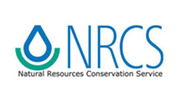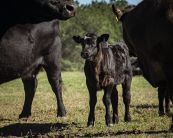
It's now officially spring! Spring calving is well underway. Small grain fields are growing and have greened up from the recent rains. Spring planting season is upon us. Fields are being prepped in anticipation of planting those spring-seeded crops such as hay grazer and cotton. Please remember to call to set your appointment date once you have finished planting your spring-seeded crops so FSA can certify your acres timely.
May there be many more spring days ahead with sun shining through the rains and plentiful rains falling on our crops and fields.
Thank you for spending some time reading over upcoming dates and programs.
Enjoy your Spring, now that it has sprung!
Adam Acker
County Executive Director, FSA
|
Dates/Deadlines
|
Mark Your Calendars!
|
|
March 29
|
General CRP Signup 62 Concludes for all offers (see below)
|
|
April 18
|
FSA County Committee (COC)Training in Texas for all COC's.
|
|
May 15
|
Deadline to report/certify spring oats by APPOINTMENTS.
|
|
May 31
|
RMA (Crop Insurance) - Final planting date for cotton.
|
|
June 19
|
USDA Service Center closed in observance of Juneteenth.
|
|
June 30
|
RMA (crop insurance) – Final planting date for grain sorghum.
|
|
July 4
|
USDA Service Center closed in observance of Independence Day.
|
|
July 15
|
Deadline to report/certify native & improved grasses and spring-seeded crops such as cotton, hay grazer by APPOINTMENTS.
|
|
AgriStress HelpLine: 833-897-AGRI (2474). AgriStress HelpLine is a free 24-hour, 7-days-a-week hotline designed for farmers and farm families seeking mental health support in Pennsylvania, Virginia, Texas, and Wyoming.
|
|
The U.S. Department of Agriculture (USDA) announced that agricultural producers and private landowners can begin signing up for the general Conservation Reserve Program (CRP) starting March 4 and running through March 29, 2024. The announcement was made earlier today by Zach Ducheneaux, Administrator of the USDA’s Farm Service Agency (FSA) at this year’s National Pheasant Fest, in Sioux Falls, SD.
On Nov. 16, 2023, President Biden signed into law H.R. 6363, the Further Continuing Appropriations and Other Extensions Act, 2024 (Pub. L. 118-22), which extended the Agriculture Improvement Act of 2018 (Pub. L. 115-334), more commonly known as the 2018 Farm Bill, through Sept. 30, 2024. This extension allows authorized programs, including CRP, to continue operating.
As one of the largest private lands conservation programs in the United States, CRP offers a range of conservation options to farmers, ranchers, and landowners. It has been an especially strong opportunity for farmers with less productive or marginal cropland, helping them re-establish valuable land cover to help improve water quality, prevent soil erosion, and support wildlife habitat.
Producers and landowners enrolled about 926,000 acres in General CRP in 2023, bringing the total of enrolled acres in General CRP to 7.78 million. This, combined with all other acres in CRP through other enrollment opportunities, such as Grassland and Continuous CRP, bring the current total of enrolled acres to 24.8 million.
General CRP
General CRP helps producers and landowners establish long-term, resource-conserving plant species, such as approved grasses or trees, to control soil erosion, improve water quality and enhance wildlife habitat on cropland. Additionally, General CRP includes a Climate-Smart Practice Incentive to help increase carbon sequestration and reduce greenhouse gas emissions by helping producers and landowners establish trees and permanent grasses, enhance wildlife habitat, and restore wetlands.
General CRP is one of several ways agricultural producers and private landowners can participate in the program.
Other CRP Options
This past January FSA began accepting applications for the Continuous CRP signup. Under this enrollment, producers and landowners can enroll in CRP throughout the year. Offers are automatically accepted provided the producer and land meet the eligibility requirements and the enrollment levels do not exceed the statutory cap.
The USDA also offers financial assistance to producers and landowners enrolled in CRP to improve the health of their forests through the Forest Management Incentive (FMI), which can help participants with forest management practices, such as brush management and prescribed burning.
FSA will announce the dates for Grassland CRP signup in the near future.
Producers with expiring CRP acres can use the Transition Incentives Program (TIP), which incentivizes producers who sell or enter a long-term lease with a beginning, veteran, or socially disadvantaged farmer or rancher who plans to sustainably farm or ranch the land.
How to Sign Up
Landowners and producers interested in CRP should contact their local USDA Service Center to learn more or to apply for the program before their deadlines.
USDA Announces Conservation Reserve Program General Signup for 2024

The U.S. Department of Agriculture (USDA) is opening a special disaster sign-up for $6 million in additional funding through the Environmental Quality Incentives Program for producers in the Texas Panhandle who have been impacted by recent wildfires. Producers must submit applications to USDA’s Natural Resources Conservation Service (NRCS) by April 8, 2024, to be considered for this funding opportunity.
“The Natural Resources Conservation Service in Texas is prepared to assist landowners with their efforts to address resource concerns caused by the recent wildfires,” said Kristy Oates, NRCS State Conservationist in Texas. “Loss of vegetation not only affects forages for livestock and wildlife habitat, but it can lead to increased soil loss due to erosion from wind and water. We know many of our Texas producers were hit hard by this disaster and we are here to help.”
Assistance includes practices aimed at replacing damaged infrastructure such as fencing and water resources, as well as management and recovery of affected lands. Eligible practices for the wildfire disaster funding include:
- Access Control
- Prescribed Grazing
- Obstruction Removal
- Emergency Animal Mortality Management
- Fence
- Water Facilities
- Pumping Plant
- Livestock Pipeline
- Range Planting
- Cover Crop
- Critical Area Planting
- Conservation Cover
- Grazing Land Mechanical Treatment
- Heavy Use Area Protection
- Mulching
- Structure for Water Control
- Pasture and Hay Planting
- Upland Wildlife Habitat Management
- Wildlife Habitat Planting
- Woody Residue Treatment
For more information about applying for EQIP assistance or help with evaluating land to address concerns following the wildfire, landowners and managers should contact their local USDA Service Center.
NRCS Assistance for Communities
NRCS also administers the Emergency Watershed Protection (EWP) program, which provides assistance to local government sponsors with the cost of addressing watershed impairments or hazards such as debris removal and streambank stabilization.
The EWP Program is a recovery effort aimed at relieving imminent hazards to life and property caused by floods, fires, windstorms and other natural disasters. All projects must have an eligible project sponsor. NRCS may bear up to 75% of the eligible construction cost of emergency measures (90% within county-wide limited-resource areas as identified by the U.S. Census data). The remaining costs must come from local sources and can be in the form of cash or in-kind services.
EWP is designed for installation of recovery measures to safeguard life and property as a result of a natural disaster. Threats that the EWP Program addresses are termed watershed impairments. These include, but are not limited to:
- Debris-clogged waterways
- Unstable streambanks
- Severe erosion jeopardizing public infrastructure
- Wind-borne debris removal.
Eligible sponsors include cities, counties, towns or any federally recognized Native American tribe or tribal organizations. Sponsors must be able to provide the local construction share, obtain permits and site access and agree to perform operations and maintenance of the constructed projects. Willing sponsors must submit a formal request (by mail or email) to the state conservationist for assistance within 60 days of the natural disaster occurrence or 60 days from the date when access to the sites become available. For more information, potential sponsors should contact their local NRCS office.
In addition to EWP, Conservation Technical Assistance is another valuable service that NRCS can provide following a wildfire. NRCS technical assistance can help fire victims with planning cost-effective post fire restoration practices.
More Information
To learn more about NRCS programs, producers can contact their local USDA Service Center. Producers can also apply for NRCS programs, manage conservation plans and contracts, and view and print conservation maps by logging into their farmers.gov account. If you don’t have an account, sign up today.
USDA touches the lives of all Americans each day in so many positive ways. Under the Biden-Harris Administration, USDA is transforming America’s food system with a greater focus on more resilient local and regional food production, fairer markets for all producers, ensuring access to safe, healthy and nutritious food in all communities, building new markets and streams of income for farmers and producers using climate smart food and forestry practices, making historic investments in infrastructure and clean energy capabilities in rural America, and committing to equity across the Department by removing systemic barriers and building a workforce more representative of America. To learn more, visit usda.gov.
|
In order to claim a Farm Service Agency (FSA) payment on behalf of a deceased producer, all program conditions for the payment must have been met before the applicable producer’s date of death.
If a producer earned a FSA payment prior to his or her death, the following is the order of precedence for the representatives of the producer:
- administrator or executor of the estate
- the surviving spouse
- surviving sons and daughters, including adopted children
- surviving father and mother
- surviving brothers and sisters
- heirs of the deceased person who would be entitled to payment according to the State law
For FSA to release the payment, the legal representative of the deceased producer must file a form FSA-325 to claim the payment for themselves or an estate. The county office will verify that the application, contract, loan agreement, or other similar form requesting payment issuance, was signed by the applicable deadline by the deceased or a person legally authorized to act on their behalf at that time of application.
If the application, contract or loan agreement form was signed by someone other than the deceased participant, FSA will determine whether the person submitting the form has the legal authority to submit the form.
Payments will be issued to the respective representative’s name using the deceased program participant’s tax identification number. Payments made to representatives are subject to offset regulations for debts owed by the deceased.
FSA is not responsible for advising persons in obtaining legal advice on how to obtain program benefits that may be due to a participant who has died, disappeared or who has been declared incompetent.

Farm Service Agency (FSA) loans require applicants to have a satisfactory credit history. A credit report is requested for all FSA direct farm loan applicants. These reports are reviewed to verify outstanding debts, see if bills are paid timely and to determine the impact on cash flow.
Information on your credit report is strictly confidential and is used only as an aid in conducting FSA business.
Our farm loan staff will discuss options with you if you have an unfavorable credit report and will provide a copy of your report. If you dispute the accuracy of the information on the credit report, it is up to you to contact the issuing credit report company to resolve any errors or inaccuracies.
There are multiple ways to remedy an unfavorable credit score:
- Make sure to pay bills on time
- Setting up automatic payments or automated reminders can be an effective way to remember payment due dates.
- Oay down existing debt
- Keep your credit card balances low
- Avoid suddenly opening or closing existing credit accounts
FSA’s farm loan staff will guide you through the process, which may require you to reapply for a loan after improving or correcting your credit report.
For more information on FSA farm loan programs, contact your Donley County USDA Service Center at (806) 874-3561 or visit fsa.usda.gov.
|

In this Ask the Expert, Cody McCann answers questions about the Risk Management Agency’s Weaned Calf Risk Protection program that provides a new insurance option for livestock producers.
What is the Weaned Calf Risk Protection Program?
Weaned Calf Risk Protection is a new insurance pilot program for 2024. The program provides beef cow/calf producers protection from revenue losses on their calves up to weaning age.
What states are eligible through the pilot program?
Right now, RMA is piloting Weaned Calf Risk Protection in all counties in Colorado, Nebraska, South Dakota, and Texas.
To read the full blog, visit: Farmers.gov Blog: Stories from Producers and USDA Experts | Farmers.gov
|
|